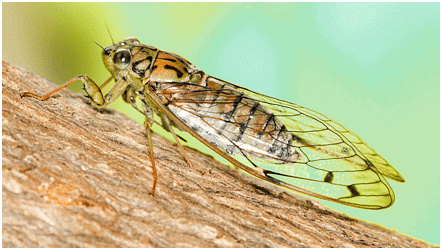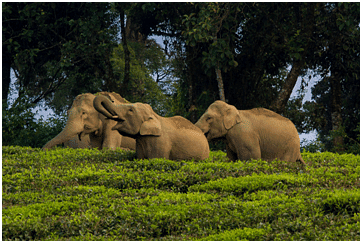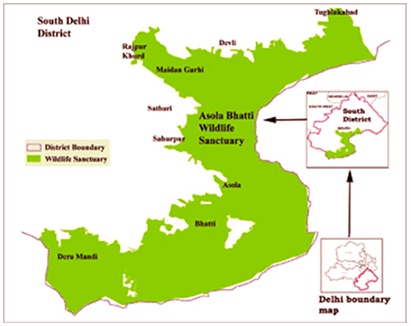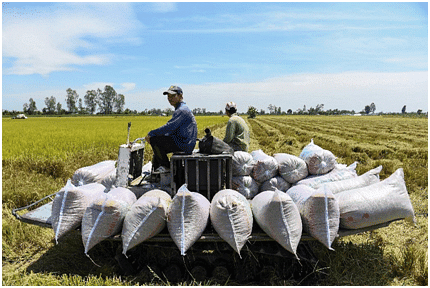Environment and Ecology: April 2024 UPSC Current Affairs | Environment for UPSC CSE PDF Download
Supreme Court ban Unregulated Soil Extraction

Context
Recently, the Supreme Court invalidated a notification issued by the Ministry of Environment three years ago. This notification had exempted the extraction of regular earth for linear projects such as road and railway construction from requiring Environmental Clearance (EC). The exemption, implemented in March 2020, was contested in the National Green Tribunal (NGT), which directed the Ministry in October 2020 to reevaluate it within three months.
What was the 2020 Exemption for Linear Projects?
- Background:
- In September 2006, the Environment Ministry issued a notification under the Environment (Protection) Act, 1986, specifying activities that necessitate prior Environmental Clearance (EC).
- In January 2016, a subsequent notification exempted certain categories of projects from this requirement.
- Exemptions Detailed in the 2020 Notification:
- In March 2020, a notification was issued that expanded the scope of activities exempt from requiring environmental clearance. This encompassed the extraction of ordinary earth, commonly known as sourcing or borrowing, for use in linear projects.
Why was the 2020 Exemption Challenged?
- Petitioner's Challenge Grounds:
- The petitioner contested the exemption before the NGT, arguing that allowing indiscriminate earth extraction was arbitrary and violated Article 14 of the Constitution of India.
- The petitioner cited the Supreme Court's Deepak Kumar versus State of Haryana Case (2012), asserting that the exemption contradicted the requirement of prior Environmental Clearance (EC) for leases.
- It was argued that the Ministry failed to follow proper legal procedures by not soliciting public objections before issuing the 2020 notification.
- Critics alleged that the EC exemption during the Covid-19 lockdown under the guise of 'public interest' was merely a pretext to favor private mining entities.
- Government's Position:
- The Centre argued before the NGT that the exemption was crucial "for the aid of the general public," benefiting various communities in Gujarat such as kumhars (potters), farmers, gram panchayats, banjara, and oad.
- It contended that granting exemptions was a policy matter not subject to judicial review.
- The primary objective of the 2020 notification was to align with amendments to the Mines and Minerals (Development and Regulation) Act, 1957, enacted in March 2020.
- These amendments allowed new lessees to continue mining for two years with the statutory clearances and licenses of their predecessors.
- NGT's Decision:
- In October 2020, the NGT advised the Ministry to adopt a balanced approach, suggesting suitable regulations for the excavation process and quantity determination instead of a blanket exemption.
- The Tribunal directed the Centre to review the notification within three months.
- Centre's Response:
- The Centre delayed action on the NGT order until the petitioner appealed to the Supreme Court.
- Supreme Court's Concerns:
- The Supreme Court ruled that the 2020 notification offering a blanket exemption lacked clarity and violated Article 14 of the Constitution.
- The Notification did not specify 'linear projects' or the quantity and area of earth extraction required.
- Moreover, it did not ensure that only necessary earth for these projects was exempted, undermining the Environmental Protection Act's purpose.
- The court found no justification for waiving the public notice requirement in the notification or in the Ministry's submissions to the NGT and SC.
- It deemed the decision arbitrary and lacking thoughtful consideration, questioning the timing of the notification during a nationwide lockdown when linear projects were on hold.
What are the Previous Similar Instances?
- In January 2018, the NGT quashed an exemption offered by the Ministry’s 2016 notification from the requirement of prior EC for building and construction activities having built-up areas of more than 20,000 sq m.
- There was nothing to suggest an improvement in the quality of the environment to justify the exemption.
- Emphasising the requirement of prior approval under the Environment Protection Act, the NGT invalidated two Office Memorandums issued by the Ministry in December 2012 and June 2013. These memorandums aimed to grant retrospective Environmental Clearance to projects under the 2006 notification.
- On 6th March 2024, the Kerala High Court quashed a 2014 notification that exempted educational institutions and industrial sheds with built-up areas of more than 20,000 sq m from obtaining EC.
Cicadas

Context
The insect species, now named Purana cheeveeda (derived from its Malayalam name Cheeveedu), was previously misidentified as Purana tigrina, a species initially described in Malaysia in 1850. Recognizing the distinct morphological differences, the Association for Advancement in Entomology has rectified this longstanding taxonomic error, consequently excluding the Malaysian species from the cicada fauna of South India.
Cicada Overview
Cicadas are hemipteran insects recognized for their distinctive and species-specific acoustic signals or songs, which are often loud and complex. India and Bangladesh boast the world's highest generic diversity of cicadas, closely followed by China. Typically, these insects inhabit the canopies of natural forests characterized by large trees. For instance, P. cheeveeda is prevalent in the tropical evergreen forests spanning from Goa to Kanyakumari.
Varieties of Cicadas
Scientists classify the over 3,000 species of cicadas into two main groups: annual and periodical. Annual cicadas emerge from the ground at varying times throughout each summer, usually displaying dark bodies with greenish markings. These insects evade predators by blending into trees and evading hungry birds and moles. In contrast, only seven species of cicadas fall into the periodical category. These insects emerge simultaneously during the summer after a dormancy period lasting either 13 or 17 years.
Advantages of Cicadas
Cicadas contribute to ecosystem health by pruning mature trees, aerating the soil, and, upon their demise, acting as a crucial nitrogen source for tree growth.
Landscape Ecology in Elephant Corridors

Context
In recent times, landscape ecology has gained significant importance in the precise identification and restoration of elephant corridors, moving beyond traditional expert field knowledge.
- Landscape ecology focuses on studying the interactions between the temporal (time-related) and spatial (space-related) dimensions of a landscape and its organisms.
- The accuracy of landscape ecology has advanced notably due to enhancements in detecting core areas, with corridors now being determined by three key factors: enhanced utilization of field data, improvements in GIS (Geographic Information Systems) technology, and the increased availability of geospatial data along with refined algorithms.
What are Elephant Corridors?
- About:
- Elephant corridors are strips of land that enable elephant movement between two or more friendly habitats.
- Status of Elephant Corridors in India:
- The key findings of the Elephant Corridors of India, 2023 Report are as follows:
- The report highlighted a surge of 62 new corridors, marking a 40% increase since 2010, now totalling 150 corridors across the nation.
- West Bengal has the highest number of elephant corridors, totalling 26, constituting 17% of the total corridors.
- The East central region contributes 35% (52 corridors), and the North East region follows as the second-largest with 32% (48 corridors).
- Southern India registered 32 elephant corridors, representing 21% of the total, while northern India has the lowest count of 18 corridors, amounting to 12%.
- Elephants have expanded their ranges in the Vidarbha region of Maharashtra and southern Maharashtra bordering Karnataka.
Elephants
- Elephants in India:
- Elephants are a crucial species and hold the designation of Natural Heritage Animal in India. India is home to the largest population of wild Asian Elephants, estimated at over 30,000 individuals. Karnataka boasts the highest elephant population among Indian states.
- Conservation Status:
- The conservation status of elephants is recognized through various international and national agreements:
- Convention of the Migratory Species (CMS): Listed in Appendix I
- Wildlife (Protection) Act, 1972: Included in Schedule I
- International Union for Conservation of Nature (IUCN) Red List:
- Asian Elephant: Endangered
- African Forest Elephant: Critically Endangered
- African Savanna Elephant: Endangered
- Conservation Efforts:
- Conservation initiatives for elephants are conducted both nationally and globally:
- In India:
- Gaj Yatra
- Project Elephant
- Globally:
- Monitoring of Illegal Killing of Elephants (MIKE) Programme
- World Elephant Day
Tissue Culture Laboratory at the Asola Bhatti Wildlife Sanctuary
Context
The Delhi forest department has initiated a project to set up a tissue culture laboratory within the Asola Bhatti Wildlife Sanctuary. This effort is focused on preserving uncommon indigenous trees. The primary goal of the laboratory is to grow endangered native trees from Delhi under controlled conditions and produce seedlings of species facing challenges in regrowth caused by invasive species.

What are key Facts about the Tissue Culture Laboratory?
- Tissue Culture Laboratory: The Delhi forest department has launched a project to establish a tissue culture laboratory at the Asola Bhatti Wildlife Sanctuary. This initiative aims to conserve rare native trees by utilizing plant tissue culture techniques to cultivate and propagate endangered tree species.
- Collaboration with Experts: The forest department will partner with botanists and scientists from prestigious institutions such as the Indian Council of Forestry Research and Education (ICFRE) and the Forest Research Institute (FRI) to facilitate this endeavor.
- Similar Initiatives: A comparable initiative, the National Facility for Plant Tissue Culture Repository (NFPTCR), was established in Delhi within the National Bureau of Plant Genetic Resources (NBPGR) in 1986. This facility specializes in conducting tissue culture experiments and research on various plant types, including tubers, bulbs, spices, plantation crops, horticultural crops, as well as medicinal and aromatic plants.
- Application in the Aravalli Plan: Endangered ridge species like Kulu (ghost tree), palash, doodhi, and dhau are facing challenges from invasive species, resulting in low survival rates. Large-scale propagation through tissue culture, especially shoot culture, is essential for their regeneration. The laboratory will also focus on culturing endangered medicinal plants.
- Success Stories and Effectiveness: Tissue culture has demonstrated significant effectiveness in agriculture, particularly with crops such as bananas, apples, pomegranates, and jatropha, yielding higher outputs compared to traditional farming methods.
- Concerns and Issues: Biodiversity experts caution that cloning should be limited to "extremely rare trees" to avoid genetic uniformity and susceptibility to specific diseases. Cloning can lead to reduced genetic diversity since cloned trees are exact replicas of a single tree or plant. To mitigate this, it's advisable to use diverse parent seeds or seed varieties rather than relying solely on one seed type.
- Experts also warn that commonly found species like khair, dhak, and desi babool in the Aravallis may not justify the expenditure of public funds, despite the potential benefits for endangered or nearly extinct species.
Understanding Tissue Culture
Tissue culture, also known as micro-propagation, is a method that enables the creation of multiple plants from a single parent plant using in-vitro tissue cultivated under controlled conditions.
Varieties of Plant Tissue Culture
- Callus Culture: This technique involves growing undifferentiated cell masses (callus) from explants.
- Cell Suspension Culture: Individual cells or small cell clusters are cultured in a liquid medium.
- Anther/Microspore Culture: This method generates haploid plants from pollen grains or anthers.
- Protoplast Culture: Isolated plant cells lacking cell walls are cultured using this approach.
Uses of Plant Tissue Culture
- Micropropagation: Rapid cloning of plants is achieved by culturing small plant tissue fragments.
- Soma-clonal Variation: This method studies genetic diversity among plant cells in culture.
- Transgenic Plants: Foreign genes (transgenes) are introduced and expressed in plant cells.
- Induction and Selection of Mutations: Mutagens are applied to induce specific trait mutations.
Animal Tissue Culture
- Animal tissue culture involves maintaining and propagating isolated cells, tissues, or organs from animals in a controlled environment.
- Cells used in animal tissue culture are typically obtained from multicellular eukaryotes and their established cell lines, facilitating research into cell functions and applications.
- The impact of animal cell culture on research and biotechnology is substantial, providing crucial insights into cell behavior across diverse scientific fields.
Exploring Asola Wildlife Sanctuary
- The Asola-Bhatti Wildlife Sanctuary marks the culmination of a vital wildlife corridor beginning at Sariska National Park in Alwar, traversing Mewat, Faridabad, and Gurugram districts of Haryana.
- This region experiences notable diurnal temperature shifts due to its semi-arid climate.
- The sanctuary's vegetation primarily consists of open-canopied thorny scrub, with native plants exhibiting xerophytic adaptations such as thorny appendages, wax-coated leaves, succulence, and tomentose foliage.
- Asola Wildlife Sanctuary is inhabited by a diverse array of wildlife, including Peafowl, Common Woodshrike, Sirkeer Malkoha, Nilgai, Golden Jackals, Spotted deer, and others.
South Africa to End Captive Breeding of Lions
Context
South Africa's recent decision to stop breeding lions in captivity, driven by worries about trophy hunting and the utilization of lion bones in traditional Chinese medicine, represents a notable change in wildlife conservation efforts.
What are the Key Traits of Lions?
Subspecies of Lions:
- In the wild, lions are classified into two subspecies: the African lion (Panthera leo leo) and the Asiatic lion (Panthera leo persica).
- African lions once roamed across much of the African continent but are now predominantly restricted to sub-Saharan Africa, with approximately 80% residing in eastern or southern Africa.
- Asiatic lions, on the other hand, are exclusively found in Gir National Park and Wildlife Sanctuary in Gujarat, India.
- Despite their similar appearance, there are noticeable differences between the two subspecies. Male Asiatic lions typically exhibit darker and shorter manes compared to African lions. Furthermore, both male and female Asiatic lions are generally smaller in size compared to their African counterparts.

- Habitat and Behavior: Lions are most active during the night and inhabit a range of landscapes, with a preference for grassland, savanna, dense scrub, and open woodland.
- Social Organization: Lions exhibit a highly social structure, forming prides comprised typically of several related females, their offspring (cubs), and a few adult males known as a coalition. Lionesses take on the primary role of hunting, while dominant males protect the pride's territory.
- Feeding Habits: As apex predators, lions primarily target large ungulates like wildebeest, zebra, and antelope. They often hunt collaboratively, leveraging agility and teamwork. Additionally, lions scavenge opportunistically, frequently pilfering kills from other predators.
- Threats: Lions confront numerous threats, including habitat loss, fragmentation, climate change, and decreasing prey populations. They are also subject to targeted hunting by trophy hunters, where animals are killed primarily for body parts like horns or skins.
- Conservation Status: According to the IUCN Red List, lions are classified as Vulnerable. They are listed under Appendix I of CITES (Convention on International Trade in Endangered Species of Wild Fauna and Flora) and are protected under Schedule I of the Wildlife Protection Act of 1972.
Gape Limitation
Context
In the examination of predator-prey interactions in ecosystems, comprehending the physical limitations that impact feeding behaviors is essential. A notable constraint in this regard is known as gape limitation, which plays a pivotal role in determining the maximum size of prey that a predator can ingest. This constraint significantly influences the predator's dietary preferences and contributes to shaping the overall structure of food webs within ecosystems.
About Gape Limitation
- In ecology, it stands for the idea that a predator can only eat things that fit in its mouth. Like a snake trying to eat a rabbit. If the rabbit is too big to fit in the snake’s mouth, the gape limitation says the snake won’t be able to eat it.
- For example, small predators can only eat small prey, while bigger predators can eat bigger prey. From the prey’s point of view, if a predator’s mouth can’t open wide enough to eat them, they might be safe from that predator.
- This barrier can in turn lead to evolutionary pressure that selects the predator’s ability to eat smaller prey or, conversely, adaptations in the predator’s behaviour to overcome gape limitation.
- It also influences how animals evolve over time. Prey animals might get faster or grow bigger to avoid being eaten by predators with smaller mouths.
- On the other hand, predators may evolve larger mouths to eat larger prey.
- Understanding gape limitations is essential to predicting how changes in predator or prey populations, changes in habitats, and/or environmental disturbances could affect the structure and function of ecosystems.
- The study of gape limitations also helps researchers understand the intricate dynamics of animal interactions and the cascading effects they have on biodiversity.
Forever Chemicals (PFAS)
What are 'forever chemicals'?
'Forever chemicals' is a colloquial term used to refer to per- and polyfluoroalkyl substances (PFAS), a group of synthetic chemicals known for their strong chemical bonds and resistance to degradation, leading to their persistence in the environment and living organisms.
Why are PFAS a concern?
- PFAS are worrisome due to their persistent nature and ability to bioaccumulate. Once released, they do not break down easily and can build up in human bodies and wildlife over time.
- Exposure to PFAS has been associated with various health issues, including cancer, liver damage, immune system disruption, and developmental effects.
Where are PFAS found?
- PFAS are present in a wide array of consumer products like non-stick cookware, stain-resistant fabrics, water-repellent clothing, food packaging, and certain cosmetics.
- They are also used in industrial processes and in firefighting foams employed at airports and military installations.
What actions are being taken to address PFAS contamination?
- Numerous countries and regions are implementing measures to regulate and phase out PFAS usage due to their environmental and health risks.
- This includes prohibiting PFAS in specific applications, establishing limits on PFAS in drinking water, and launching cleanup initiatives at contaminated sites.
- Entities like the European Union and the United States Environmental Protection Agency (EPA) are actively developing comprehensive PFAS regulations.
How can exposure to PFAS be reduced?
- To minimize exposure to PFAS, consumers can:
- Steer clear of products known to contain PFAS, such as non-stick cookware and certain waterproof or stain-resistant items.
- Opt for fast food and packaged goods that avoid using PFAS in their packaging.
- Verify whether local water supplies have been tested for PFAS and utilize water filters capable of reducing PFAS levels if needed.
What is being done to research and monitor the effects of PFAS?
- Ongoing research investigates the health and environmental impacts of PFAS. Scientific studies delve into the mechanisms by which PFAS affect human health and the ecosystem.
- Monitoring efforts involve tracking PFAS concentrations in water sources, wildlife, and human populations to enhance understanding of the distribution and consequences of these chemicals.
Invasive Alien Species

Context
The Andaman and Nicobar Islands administration recently enlisted the assistance of the Wildlife Institute of India to address the burgeoning population of invasive chital (spotted deer) on Ross Island.
Invasive Alien Species
- These are the species whose introduction and/or spread outside their natural past or present distribution threatens biological diversity.
- These include animals, plants, fungi, and even microorganisms, and can influence all kinds of ecosystems.
- These species need an introduction either through natural or human intervention, survive on native food resources, reproduce at a fast rate, and edge out native species in the competition over resources.
- Invasive species act as disruptors in the food chain and disturb the balance of the ecosystem. In habitats where there is no competition, invasive species can dominate the entire ecosystem.
- Characteristics: Common characteristics of IAS include rapid reproduction and growth, high dispersal ability, phenotypic plasticity (ability to adapt physiologically to new conditions), and ability to survive on various food types and in a wide range of environmental conditions.
- Areas more susceptible for Invasive Alien species are:
- Native ecosystems that have undergone human-induced disturbance are often more prone to alien invasions because there is less competition from native species.
- Islands are especially vulnerable to IAS because they are naturally isolated from strong competitors and predators.
- Islands often have ecological niches that have not been filled because of the distance from colonizing populations, increasing the probability of successful invasions.
- The list of invasive wildlife in India is dominated by certain species of fish such as the African catfish, Nile tilapia, red-bellied piranha, and alligator gar, and turtle species such as the red-eared slider.
Science Based Targets initiative (SBTi)
Context
The Science Based Targets Initiative (SBTi) recently made a controversial decision to allow carbon offsetting for Scope 3 emissions of businesses that have climate targets aligned with SBTi, sparking debate and skepticism.
Science Based Targets Initiative (SBTi)
- The Science Based Targets Initiative (SBTi) is a global program founded in 2015 with the objective of encouraging and assisting companies in establishing science-based targets (SBTs) to reduce greenhouse gas emissions and constrain global warming to well below 2°C above pre-industrial levels.
- SBTi operates through a partnership involving CDP, the United Nations Global Compact, the World Resources Institute (WRI), and the World Wide Fund for Nature (WWF).
- SBTi furnishes a framework and guidelines for companies to define targets aligned with the latest climate science, including the objectives of the Paris Agreement, which entails setting targets consistent with limiting warming to 1.5°C above pre-industrial levels—a more ambitious goal of the Agreement.
- Companies have the opportunity to have their targets independently verified and endorsed by SBTi to ensure alignment with current science and the Paris Agreement's objectives.
- Through the adoption of science-based targets, companies showcase their dedication to addressing climate change and reducing their carbon footprint. SBTi differentiates between near-term and long-term commitments: near-term targets outline emissions reduction plans for the next 5-10 years, crucial for significant progress by 2030 and a prerequisite for achieving net-zero targets.
- Long-term targets illustrate how emissions must be reduced to achieve net zero, as per the SBTi Corporate Net-Zero Standard, by 2050 at the latest (2040 for the energy sector).
- SBTi administers the SBTi Net-Zero Standard, a pioneering framework for establishing corporate net-zero targets aligned with climate science. This standard is the sole global framework for corporate net-zero target setting and equips companies with the necessary guidance and tools to establish science-based net-zero targets.
Forests as National Asset: Supreme Court
Context
The Supreme Court, in a ruling, emphasized that forests in India are a national resource and a significant contributor to the country's economic prosperity. Forests are not merely clusters of trees; they represent a crucial asset for the nation's economy and environmental well-being.
Dimension - Importance of Forests
- Biodiversity Conservation: Forests are essential for preserving biodiversity, providing habitats for diverse plant and animal species, which contribute to ecological balance.
- Carbon Sequestration: Forests act as carbon sinks by absorbing carbon dioxide, mitigating climate change. India's forests sequester around 24,000 million metric tonnes of carbon dioxide, helping regulate the global climate.
- Soil and Water Conservation: Trees and vegetation in forests prevent soil erosion, regulate water cycles, and maintain groundwater levels. Forests act as natural water filters, ensuring water purity and availability for human use and agriculture.
Dimension - Economic Value of Forests
- Carbon Trading: Forests contribute to a nation's economic wealth through revenue earned from carbon trading. Countries with surplus forest cover can sell carbon credits, encouraging forest conservation and sustainable management.
- Timber and Non-timber Forest Products (NTFPs): Forests provide valuable timber and non-timber forest products like medicinal plants, fruits, and resins, supporting local economies and providing livelihoods to forest-dependent communities.
- Tourism and Recreation: Forests attract tourists and nature enthusiasts, generating income through ecotourism activities such as wildlife safaris, trekking, and camping. Sustainable tourism practices can promote conservation and benefit local communities.
Dimension - Threats to Forests and Conservation Measures
- Forest Conservation Laws: Strong legal frameworks and enforcement mechanisms are crucial to protect forests from illegal logging, encroachment, and unsustainable land use. Reviewing acts like the Forest (Conservation) Amendment Act (FCAA) 2023 is essential to uphold forest conservation principles.
- Community Participation: Involving local communities and indigenous groups in forest management promotes sustainable resource use and resolves conflicts. Community-based initiatives empower stakeholders and encourage responsible forest stewardship.
- Monitoring and Enforcement: Regular monitoring, surveillance, and strict enforcement of forest laws are vital to prevent deforestation, degradation, and wildlife poaching. Technology such as satellite imagery aids in monitoring forest cover changes and detecting illegal activities.
Golden Trevally

Context
Scientists from the ICAR-Central Marine Fisheries Research Institute (CMFRI) have achieved successful captive breeding of golden trevally (Gnathanodon speciosus).
About Golden Trevally Fish
- The golden trevally, also known as the golden kingfish, is a valuable marine species highly suitable for mariculture due to its rapid growth, excellent meat quality, and strong market demand for both consumption and ornamental purposes.
- This reef-associated fish often cohabits with larger species like skates, sharks, and groupers.
- In India, observations of fish landings indicate that golden trevally are predominantly caught in reef areas off the coasts of Tamil Nadu, Puducherry, Kerala, Karnataka, and Gujarat.
Key Facts about Central Marine Fisheries Research Institute
- The Central Marine Fisheries Research Institute (CMFRI) was established by the Government of India in 1947 under the Ministry of Agriculture and Farmers Welfare and became part of the Indian Council of Agricultural Research (ICAR) in 1967.
Mandate
- Monitor and assess both exploited and under-exploited marine fisheries resources within the Exclusive Economic Zone (EEZ).
- Investigate variations in marine fisheries resource abundance in response to environmental changes.
- Develop mariculture technologies suitable for finfish, shellfish, and other culturable organisms in open seas to complement capture fishery production.
- CMFRI has notably developed and refined the "Stratified Multistage Random Sampling Method," a unique technique for estimating fishery catch and effort along India's extensive 8,000 km coastline.
Headquarters: Kochi, Kerala
Vietnamese Methods to Reduce Methane

Context
Farmers in Vietnam are adopting innovative techniques to reduce methane emissions by changing how they grow rice.
About Innovative Techniques
- Irrigation Method: They employ an innovative irrigation technique known as alternate wetting and drying (AWD), which reduces water usage compared to traditional farming methods by intermittently submerging paddy fields. This method also decreases methane production.
- Drone Utilization: Drones are utilized for crop fertilization, reducing labor costs associated with traditional manual methods.
- Effective Stubble Usage: Rather than burning rice stubble (a significant cause of air pollution), it is repurposed as livestock feed and utilized for cultivating straw mushrooms.
Rice's Impact on Climate Change
Rice cultivation is not only vulnerable to climate change but also plays a distinctive role in contributing to it.
- High Labor and Water Usage: Rice cultivation requires separate fields and manual planting of seedlings in flooded conditions, involving intensive labor and water usage that fosters methane production.
- Methane Production from Inundated Fields: Inundated rice fields prevent oxygen from entering the soil, creating an environment conducive to methane-producing bacteria.
- Methane Emissions: Rice paddies contribute significantly to human-made methane emissions, accounting for approximately 8% of methane in the atmosphere.
|
95 videos|231 docs|52 tests
|
FAQs on Environment and Ecology: April 2024 UPSC Current Affairs - Environment for UPSC CSE
| 1. What is the significance of the Supreme Court ban on unregulated soil extraction? |  |
| 2. How do cicadas play a role in landscape ecology in elephant corridors? |  |
| 3. What is the purpose of establishing a tissue culture laboratory at the Asola Bhatti Wildlife Sanctuary? |  |
| 4. Why is South Africa planning to end captive breeding of lions? |  |
| 5. What are Forever Chemicals (PFAS) and why are they a concern for the environment? |  |






















